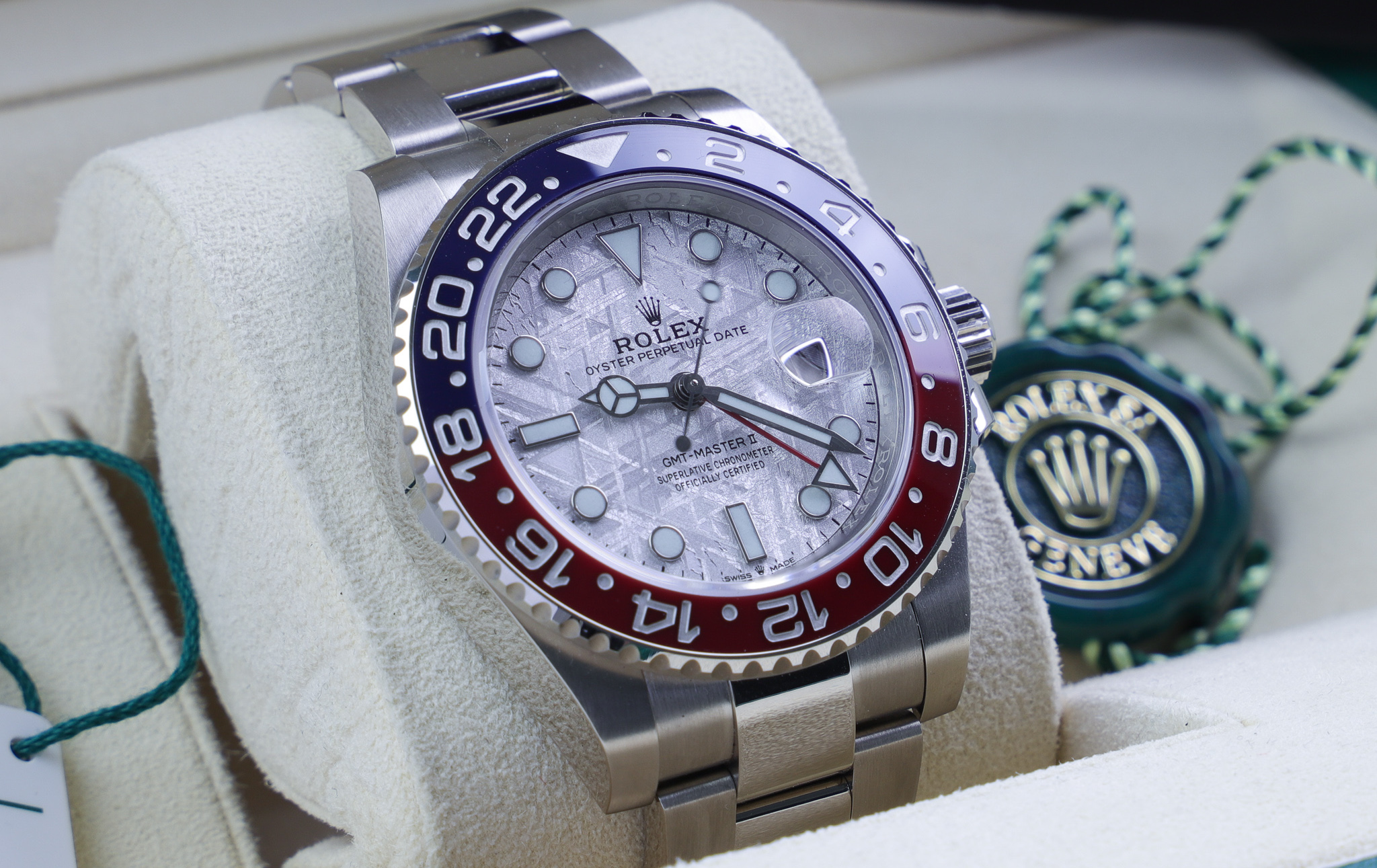
When did Rolex Change to Ceramic Bezel?
Rolex is a company that invests heavily in research and development. And one of the key focuses for the brand is to create watches that can last for generations and will look essentially exactly the same as on the day you bought them, two, five, or even 10 decades from now.
Over the years, Rolex has taken many steps in this direction, to ensure their watches not only last longer but also remain virtually unchanged. Rolex, for example, changed its luminous material, partly because it aged and changed in appearance over the years. They also changed the hands from steel to white gold to prevent rust and tarnishing.
And, of course, they changed the bezel inserts for their dive watches from aluminum to ceramic.
So when did Rolex change to ceramic bezel?
Before we dig into this question, let’s look at the background of the Rolex ceramic bezel.
Rolex ceramic Cerachrom bezel
Like so many other parts and materials that Rolex use, the company likes to give them names that make them sound more unique and proprietary. This is why Rolex of course has given their ceramic bezel a proprietary name as well, Cerachrom.
Prior to the ceramic bezel, Rolex used aluminium bezel inserts for their watches. But the issue with these is that they fade and scratch over time. This of course does not align with Rolex’s vision of creating watches that remain the same year after year. As a result, Rolex looked for alternatives and found that the best solution was ceramic.
In Rolex’s own words: “The bezel is one of the most visible parts of a watch and one of the most exposed to shocks, scratches, corrosion and other environmental factors. Thanks to the particularly durable properties of these high-technology ceramic components, the watches retain all of their beauty and functionality even in the most extreme conditions.”
The Cerachrom bezel was specifically developed for the Professional models in the Oyster collection, which doesn’t come as a surprise seeing that they are the only ones to have bezel inserts.
The ceramic bezel is crafted from a hard and corrosion-resistant ceramic. It is also highly resistant to scratches. Rolex calls it “virtually impervious to scratches”. This is true, but as you know, ceramic may crack, although it is very uncommon to happen in Rolex watches. Partially as it sits protected inside the bezel.

When did Rolex change to ceramic bezel?
Rolex started to change to the ceramic bezel in 2005.
Rolex developed and patented the Cerachrom bezel in 2005. The first watch to feature a ceramic bezel was the GMT-Master II in full yellow gold, reference 116718LN. This model was released on the 50th anniversary of the Rolex GMT-Master. Ultimately, this replaced the previous version, reference 16718 which used an aluminum bezel. The LN in the reference number stands for “lunette noir” and refers to the black bezel insert.
The first stainless steel watch to feature the ceramic bezel was the same model, but in steel, reference 116719LN, launched in 2007.
But it’s not possible to say an exact year when Rolex changed to the ceramic bezel. Because Rolex did not change to ceramic bezels at the same time. Bear in mind that during this time, both the Daytona and the Submariner models were still not made with ceramic bezels.
The first time that the ceramic bezel was implemented on a Daytona model was in 2011 with the reference 116515. The first time that Rolex introduced a colored ceramic bezel was in 2013 with the full-platinum Daytona reference 116506 which was released on the 50th anniversary of the Daytona model. This marked the first time that the ceramic bezel was made in a different color than black. The ceramic bezel of the 116506 has a chestnut color instead of the black color of the GMT-Master.
In 2013, Rolex introduced the first bi-color ceramic bezel. Part of the reason why Rolex initially launched an all-black ceramic bezel was that they had not mastered the challenges of making a perfect bi-color bezel. Bear in mind that perfectly combining two different colors and creating a seamless, sharp, connection between them is not an easy fit. The first bi-color ceramic bezel was released in 2014 under reference 116710BLNR. One year later, in 2014, Rolex released a blue and red version in full white gold, reference 116719BLRO.
Today, Rolex has incorporated the ceramic bezel in most of the brand’s Professional models, with the exception of the Rolesium Yacht-Master
The Cerachrom bezel can be found on the Yacht-Master, Yacht-Master II, Submariner, Submariner Date, Sea-Dweller Deepsea, and Daytona.






“One year later, in 2014, Rolex released a black and blue version in full white gold, reference 116719BLRO”
Think you’ll find that was a red & blue bezel not black & blue
Thanks for point this out! You are absolutely right! It has been corrected.
Kind regards,
Millenary Watches
Didn’t answer the date for the first steel sub ceramic insert. 2012 rings a bell
Hi,
The 116610 was released in 2010. The no-date version 114060 was released in 2012.
Kind regards,
Millenary Watches